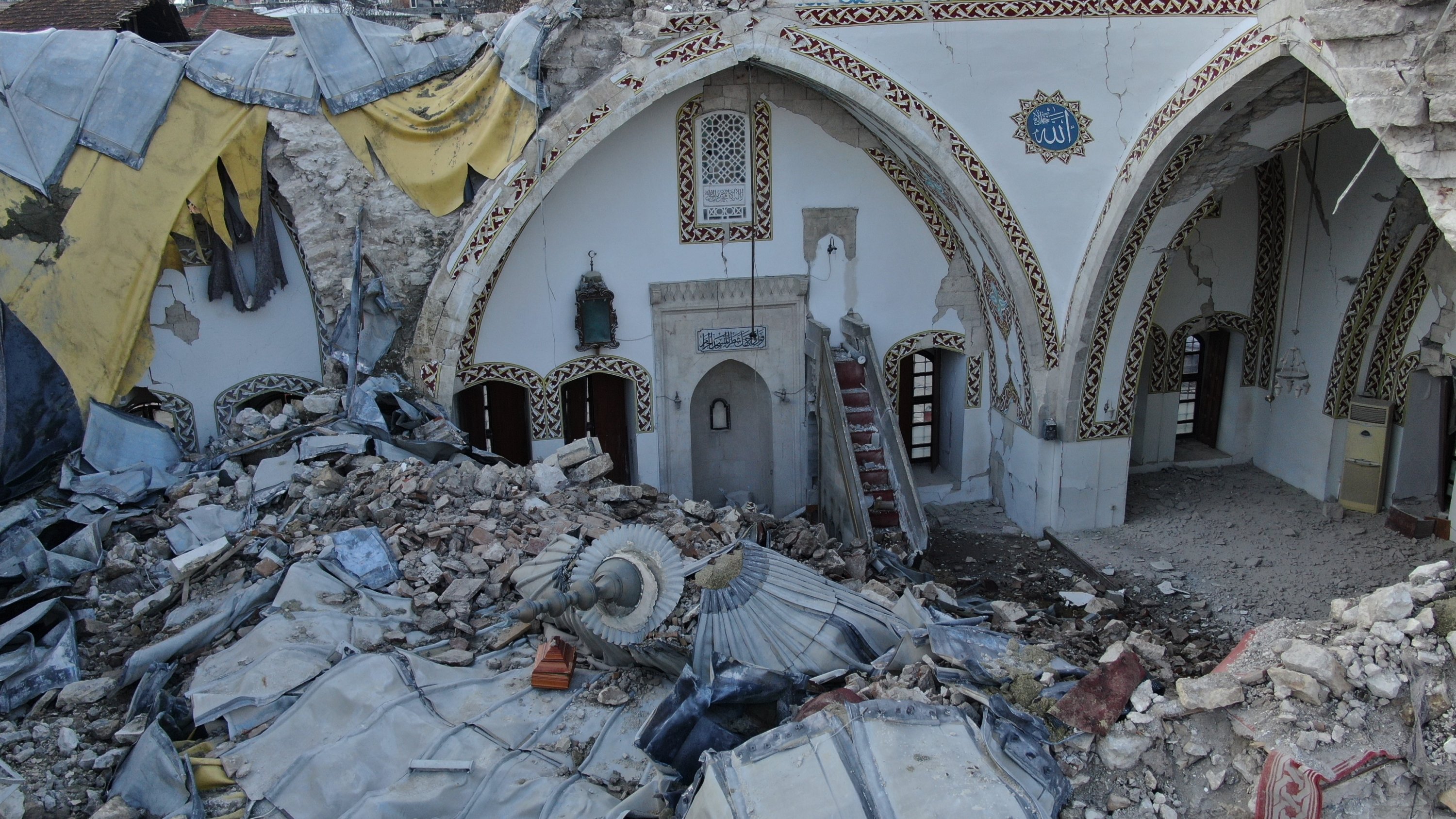© Turkuvaz Haberleşme ve Yayıncılık 2024
At least 18,991 people have lost their lives, while several buildings, including significant historical sites like bazaars, a 14th-century mosque and an old Latin church, were partially or fully demolished when the ''disaster of the century'' hit Türkiye's southeastern region.
Amid the desolation and misery, hope continues to prevail after the rescue teams were able to save the victims days after the catastrophe. National and international rescue teams race against time to save as many people as possible. However, the colossal disasters damaged the cultural heritage as well. Heritage assets in the region, famous for their archaeological treasures, museums and mosaics mostly located in Hatay and Antakya, endured severe damage when the powerful earthquakes rocked the province on Monday.
Habib-i Neccar Mosque
It is believed that the earthquake completely demolished the outer structure of Habib-i Neccar Mosque in Antakya, one of Anatolia's oldest mosques, along with the Diyarbakır Ulu Mosque dating to the seventh century.
A picture of the wreckage of the historic mosque believed to have been built in the A.D. seventh century shows that only a pile of rubble remains from the building.

The mosque was renovated during the Ottoman period when the madrassa (Islamic religious school) was added to its enclosure in the center of Hatay and used to serve as one of the most visited tourist spots in the city according to the Hatay Provincial Directorate of Culture and Tourism.
Latin Catholic Church
Most of the 152-year-old Latin Catholic Church in the Iskenderun district of Hatay, hit by the Kahramanmaraş-centered earthquake, was destroyed.
The Italian-Latin Catholic Church, which took 13 years to build and was the center of the Anatolian Catholic Church, was also knocked down in Monday's earthquakes. The area where the ritual and funeral ceremonies of the Latin church were held was completely destroyed.

No one was killed or injured in the church, where the Virgin Mary Statue stands, Demirören News Agency (DHA) reported.
St. Pierre Church, one of the first churches to spread Christianity located in Antakya, on the other hand, was not affected by the earthquakes. As a precaution, the doors of the cave church have been locked by the officials but no damage to the stairs or the ground toward the church was reported.
Historical Antep houses
The historical Antep houses, which represent a valuable touristic asset and stand as landmarks unique for their structures isolated from the outdoors, were hit hard and mostly destroyed by the tremors.
The houses garner attention specifically for staying cool in the summer and warm in the winter. They are built with several types of natural stones such as basalt (black stone), red marble and some other natural stone types.
The historical Yeni Camii (New Mosque), located in the city center of Türkiye's southeastern Malatya, was also torn apart on Monday after previously being damaged during the earthquakes that rocked the same region in far 1894 and March 1964.
